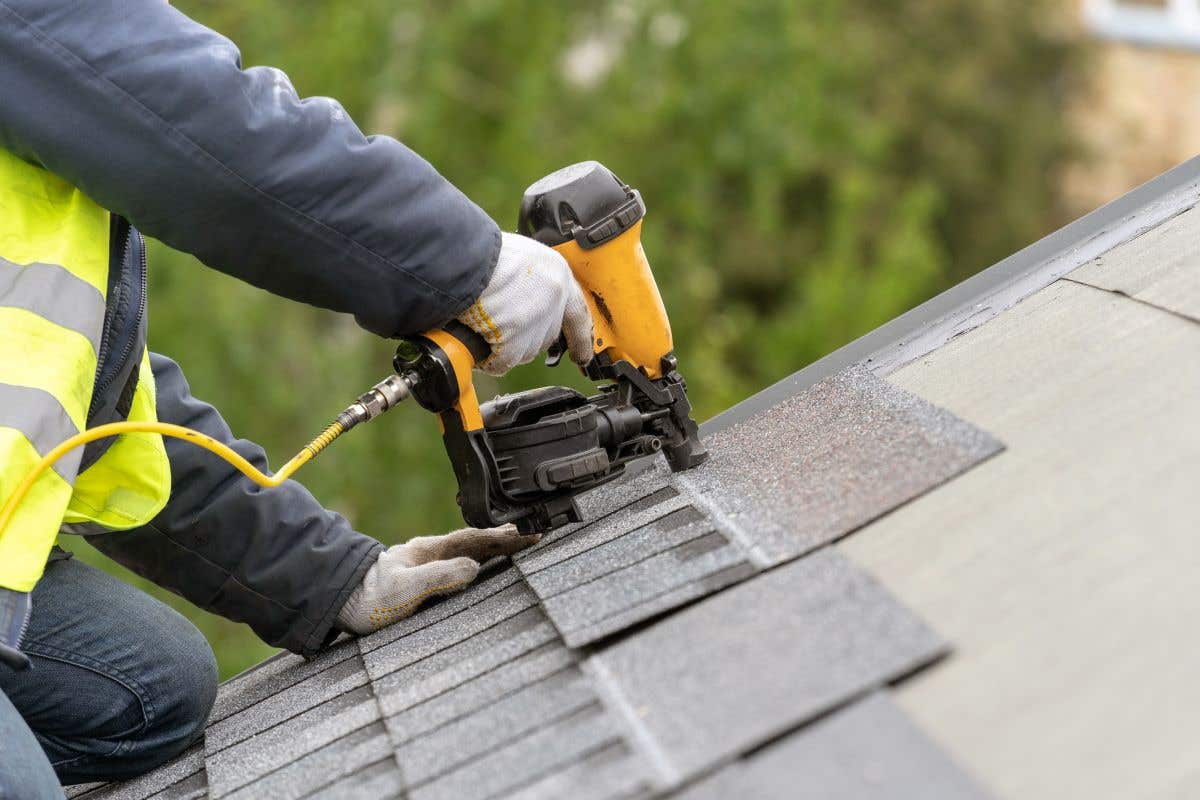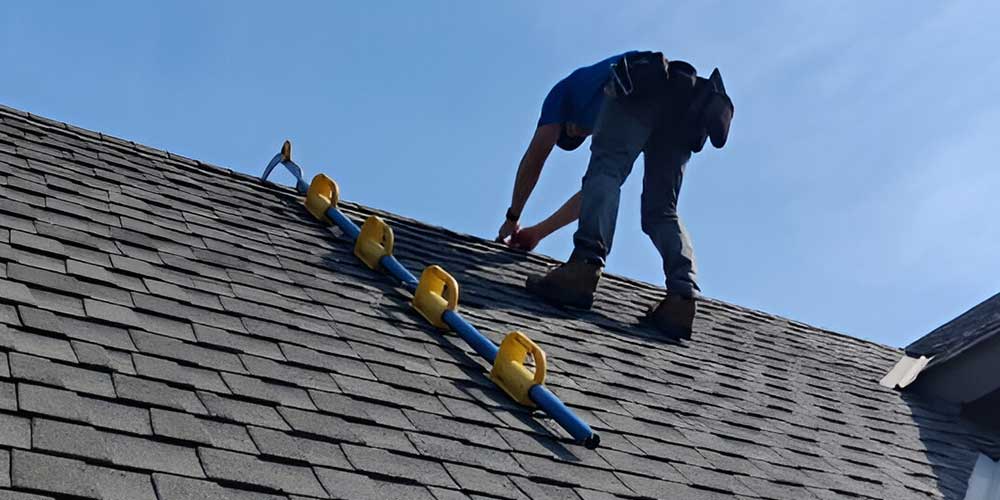Oahu Roofing: Trusted Roofing Solutions for Houses and Companies
Oahu Roofing: Trusted Roofing Solutions for Houses and Companies
Blog Article
Recognizing the Different Sorts Of Roofing Systems: A Comprehensive Guide for Homeowners
With a variety of options-- ranging from the typical gable to the contemporary level-- each type provides special advantages and obstacles that should align with the home owner's certain needs and ecological factors to consider. As we check out the intricacies of different roof covering kinds, it becomes apparent that one dimension does not fit all; the best choice might shock you.
Saddleback Roof
Saddleback roofs, characterized by their triangular form, are among one of the most prominent roof covering designs due to their simplicity and performance in dropping water and snow. This style includes 2 sloping sides that fulfill at a ridge, enabling effective drainage and minimizing the threat of water accumulation. The high pitch generally related to gable roof coverings boosts their ability to handle hefty rainfall, making them ideal for numerous environments.
Along with their sensible benefits, gable roof coverings supply visual adaptability. They can be adapted to numerous building designs, from typical to contemporary homes. The design can likewise fit added functions such as dormer home windows, which enhance all-natural light and air flow in the attic room area.
Furthermore, gable roofing systems give sufficient room for insulation, adding to power efficiency. Homeowners can select from a selection of roof covering materials, including asphalt shingles, steel, and tiles, additionally improving modification choices.
Despite their advantages, saddleback roofs may require extra assistance in areas prone to high winds or hefty snowfall. Generally, the saddleback roof remains a popular choice because of its mix of capability, resilience, and aesthetic charm.
Flat Roofs
Level roofs are usually recognized for their minimal layout and sensible applications, especially in industrial and industrial settings (oahu roofing). These roofing systems include a virtually straight or straight surface, which enables for simple building and construction and versatile space utilization. While they may lack the visual allure of pitched roofings, flat roof coverings use various advantages, specifically in urban environments where making best use of area is critical
Among the key benefits of flat roof coverings is their access. House owners can utilize the roof area for numerous purposes, such as roof yards, terraces, or photovoltaic panel installations. Furthermore, level roofs are commonly more economical to install and preserve compared to their sloped counterparts, as they require fewer materials and labor.
Common products used for flat roof coverings include built-up roof (BUR), changed asphalt, and single-ply membrane layers, each offering distinct benefits. On the whole, level roofs offer as a practical and adaptable choice for many house owners and companies alike.
Hip Roofings
Hip roofings are identified by their sloped sides that assemble on top, creating a ridge. This style is distinct from gable roofs, as all 4 sides of a hip roof covering slope downwards towards the wall surfaces, giving a much more stable framework. The angle of the slopes can vary, enabling adaptability in building aesthetic appeals and functionality.
Among the main benefits of hip roofings is their capacity to stand up to hefty winds and damaging climate condition. The sloped surface areas make it possible for far better water drainage, lowering the threat of leaks and water damage. In addition, hip roof coverings use enhanced attic room room, which can be utilized for storage space and even converted right into comfortable locations.
Nevertheless, constructing a hip roof can be a lot more costly and complex than simpler roof covering types, such as saddleback roofs. The extra product and labor associated with creating the slopes and guaranteeing correct structural stability can lead to greater expenditures. Regardless of these drawbacks, numerous property owners favor hip roofs for their sturdiness, aesthetic allure, and potential for power efficiency.
Mansard Roof Coverings
Mansard roofings, often recognized by their distinct four-sided layout, function two inclines on each side, more helpful hints with the reduced slope being steeper than the upper. This building style, originating from France in hop over to here the 17th century, is not just visually attractive however functional, as it makes best use of the functional space in the top floorings of a building. The high lower incline enables more headroom, making it an optimal choice for lofts or attics, which can be exchanged living rooms.
Mansard roofs are defined by their versatility, suiting numerous building styles, from traditional to modern. They can be built with different products, consisting of asphalt tiles, slate, or metal, offering property owners with a variety of options to match their choices and budget plans. Furthermore, the layout permits for the assimilation of dormer windows, improving natural light and air flow in the top levels.
Nevertheless, it is important to take into consideration the prospective drawbacks. Mansard roofs might call for more upkeep due to the intricacy of their layout, and their steep slopes can be challenging for snow and rain drainage. Overall, mansard roofing systems combine style with functionality, making them a preferred choice among house owners looking for unique architectural features.
Lost Roofings
As house owners increasingly look for simplicity and functionality in their building designs, dropped roofings have actually arised as a prominent choice. Identified by a single sloping airplane, a shed roof covering provides a minimalist visual that complements different home designs, from modern to rustic.
Among the primary benefits of a shed roof is its straightforward building, which frequently equates to lower labor and product expenses. This design enables reliable water drain, lowering the risk of leaks and water damage. In addition, the upright incline gives enough room for skylights, enhancing all-natural light within the inside.
Lost roofing systems additionally provide adaptability in terms of usage. They can be properly incorporated right into additions, garages, or exterior frameworks like sheds and pavilions. Additionally, this roof covering i thought about this design can accommodate various roofing products, including steel, asphalt tiles, and even eco-friendly roofing systems, straightening with environment-friendly efforts.
However, it is necessary to think about regional environment problems, as hefty snow tons might necessitate changes to the roofing's angle or structure. Generally, dropped roof coverings provide a functional and aesthetically pleasing alternative for homeowners seeking to optimize performance without jeopardizing style.
Final Thought


Gable roofs, identified by their triangular shape, are among the most prominent roof covering styles due to their simpleness and efficiency in shedding water and snow. oahu roofing. The steep pitch generally linked with gable roofings boosts their capacity to manage hefty rainfall, making them ideal for different environments
While they may do not have the aesthetic allure of pitched roofs, level roofs provide numerous benefits, specifically in urban settings where making best use of space is critical.

Report this page